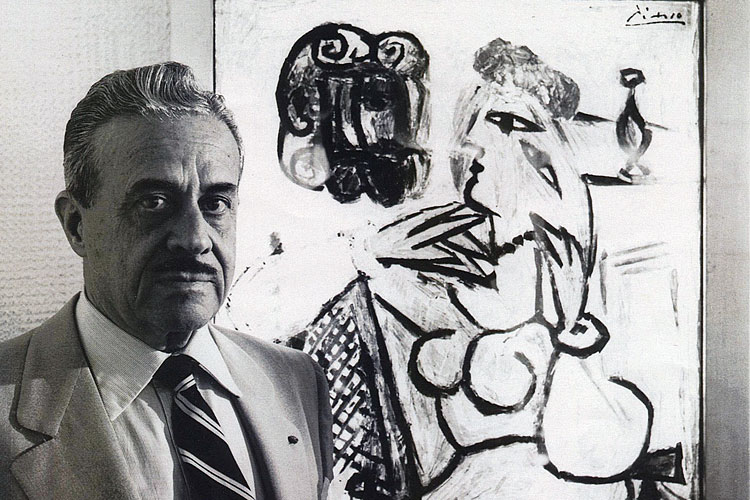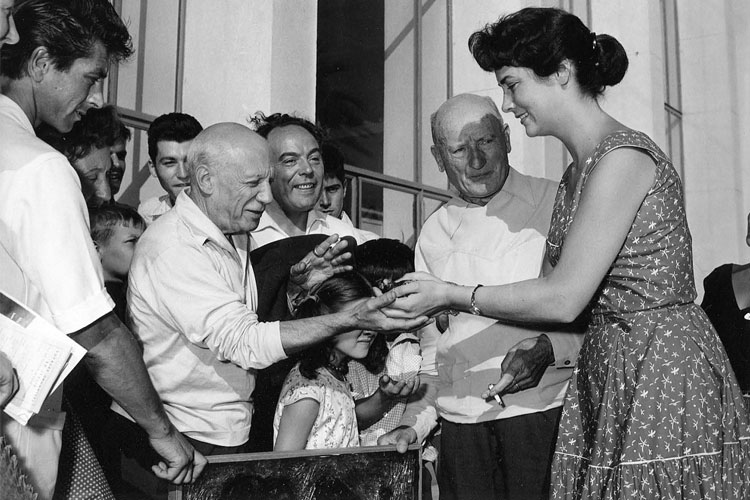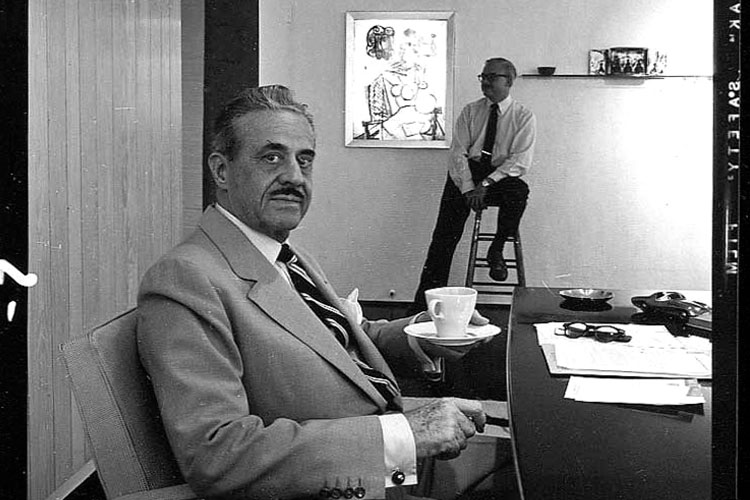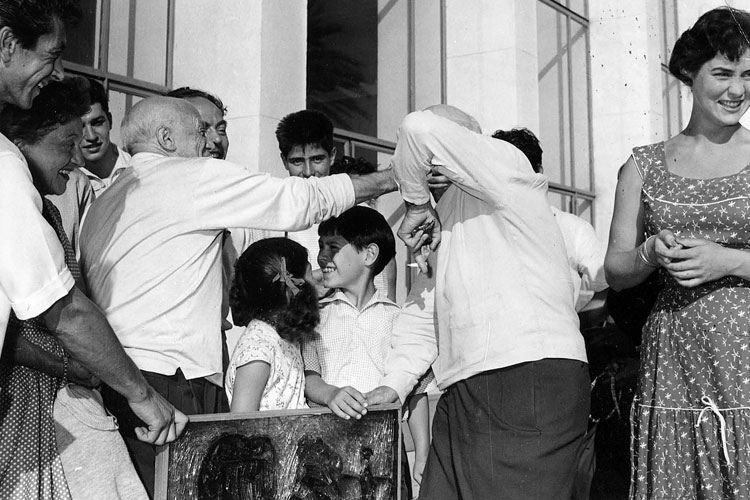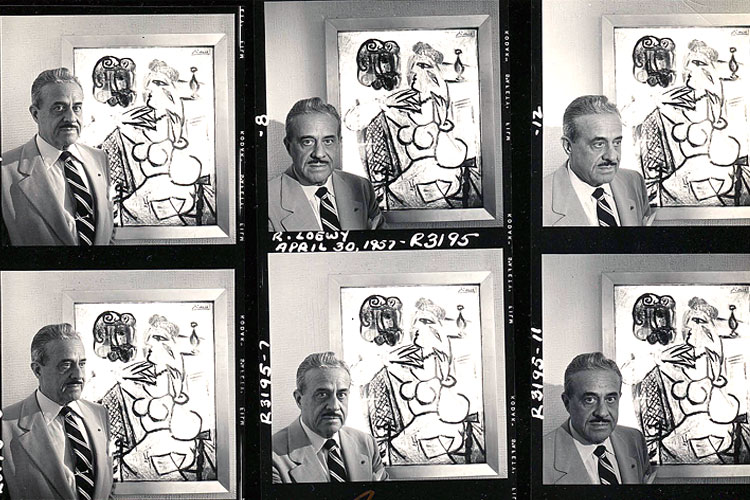Pablo Picasso Le Gemmail "Femme assise au chapeau rouge"
Details
New York - July, 2014 - Guernsey's is privileged to offer the remarkable Seaside Heights, New Jersey 1910 Dentzel Carousel.
Universally considered as one of the finest carousels ever created, every effort is being made to find a new home for the Carousel in its entirety.
Should, after months of attempts, no buyer is found, the carousel will be sold at auction animal by animal. Interested parties are urged to contact Guernsey's at the very soonest opportunity.
Featured Item
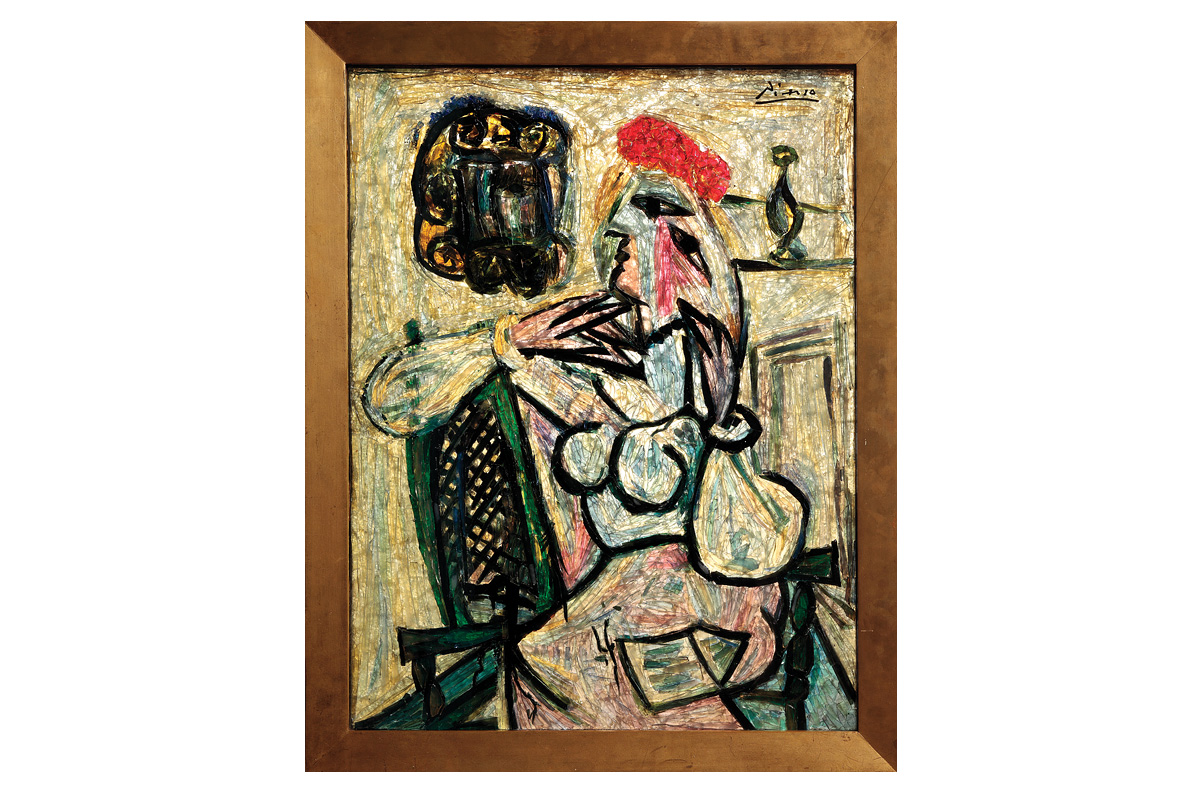

History
The story of Les Gemmaux begins in 1936. The art form was invented in 1930 by the French painter Jean Crotti, who was working in Paris after his return from the United States after World War I. The word Le Gemmail (the singular form of Gemmaux) is the contraction of two words: "gemmme," meaning precious stone and "email," meaning enamel, the medium used to assemble pieces of glass. Crotti, who in 1950 was awarded the highest French award possible, Chevalier of the Legion of Honor, was a close neighbor of the Malherbe family in a suburb of Paris.
The Malherbes were from a long line of physician-inventors and well-known in scientific circles for studying the molecular diffusion of light and fluorescence, among other things. The patriarch Emanuel Malherbe-Navarre and his sons Christian and Roger Malherbe-Navarre were physicists, and another son, Jean Paul Sala Malherbe, was also involved. After Crotti showed them his new art form, it was the Malherbes who successfully developed and perfected the process of the Gemmail and by the early 1950s had formed their own Atelier for creating them.
The physical creation of Les Gemmaux as developed by the Malherbes was based on the original ideas of Crotti, but expanded and refined by them into a streamlined and effective professional process. The artist worked on large sheets of glass placed on trestles and illuminated from underneath, layering fragments of glass of varying degrees of thickness and different colors, depending on the tones and effect desired. These were temporarily stuck together using transparent glue, then checked and signed by the artist, and placed into a drying kiln where the glue was removed. Next, using a special, secret-formula glue developed by the inventor, the fragments of glass were permanently attached to prepare for the final firing. The temperature of the final firing was increased slowly and carefully in order to avoid any damage to the piece, and the final cooling was carefully controlled in the same way. As a final step, each finished Gemmail was enclosed in a deep wood frame which allowed for support of the glass and enough room for a constant light source behind.
Picasso was introduced to Les Gemmaux in 1954 through his friend Jean Cocteau, who took him to the L'Atelier Malherbe. Cocteau was an influential French writer, poet, ballet scenarist, librettist, volunteer war ambulance driver, screenwriter, director, set designer, and socialite. He knew and interacted with the social, artistic, and creative elites of his day, which in Paris in the 1940s and 1950s, included both Pablo Picasso and the Malherbe-Navarres.
Through the techniques of this new art form, Picasso could envision the great possibilities of artistic expression available to him to illuminate all his masterpieces. Les Gemmaux are able to show color in a way that cannot be reproduced on canvas or paper, or any other medium of art for that matter. Like a precious stone sparkling in a perfect setting, a Gemmail is essentially a translucent painting, transforming and modulating color by capturing light through the many layers and textures of the glass. Picasso excelled at the difficult and meticulous process involved, layering the variously-sized pieces of fine glass to create and expand depth and intensity of color. He decided to make his first masterpiece, "Femme dans un fauteuil d'osier" in 1954. He was so fascinated by the result that he kept on working for the next two years.
During this time Picasso introduced this new art form to several of his friends and fellow artists, including Georges Braque, and Kees Von Dongen. Braque was the talented French painter who also created an extensive graphic oeuvre, making etchings, lithographs and woodcuts, and after 1939 began to intensively work with sculpture and pottery. He first met Picasso in 1907 and together they had experimented through cubism to introduce volume and a new perception of shape into their art. Braque, who was always on the lookout for new artistic techniques and materials, was won over by Les Gemmaux and created several works himself. He stated, "If I were thirty years old, I would be known as the Gemmist Braque." He created Gemmaux using pieces of glass that were all of the same size and shape, totally different manner than Picasso's multilayered, more artistically sophisticated approach. In time Braque came to realize that Picasso had mastered the technique of creating Les Gemmaux in ways he himself never could. It was therefore not long before Braque discontinued his efforts in glass.
Pablo Picasso is quoted as saying about Les Gemmaux, "A new art is born." It is important to understand that while Picasso had the artistic brilliance to envision the untold possibilities of such an art form, he was without the knowledge, training, equipment, and supporting materials to start creating what would eventually be these masterpieces. The Malherbe Family Atelier possessed that knowledge, training, equipment and materials. Therefore a collaborative relationship was established between Picasso and Jean Claude Malherbe. During the period between 1954 and 1956, Malherbe and Picasso worked on this almost magical collection at the atelier of Malherbe, with Picasso creating a total of 50 Gemmaux masterpieces.
This extraordinary adventure in new art resulted in a series of public exhibitions in respected museums and galleries lasting from 1956 to 1998.
After an exclusive exhibition in March 1957 opened at a prestigious gallery on Faubourg St Honoré in Paris, Les Gemmaux went on to tour prominent museums in the USA, including foremost among them the prestigious Metropolitan Museum of Art and the Corning Glass Museum. At the 1957 retrospective exhibit, among the throngs of socially prominent attendees were the royal family of Monaco, the Queen of England and the royal family, the Belgian royal family, Coco Chanel, Yves St Laurent, Jacques Cartier, Edith Piaf, Pierre Cardin, French Minister of Culture Madame la Duchesse de La Rochefoucauld, Elizabeth Arden, Marlene Dietrich, and Francine Weisweiller, to name just a few. From these exhibitions a number of pieces were sold to members of the social elite of the day, including the Emperor of Japan, Raymond Loewy, Stanley Marcus, Nelson Rockefeller, Prince Rainier of Monaco, the Rothschild family, the Weisweiller family, and several who chose to remain anonymous. In 1964, Raymond Nacenta organized a retrospective exhibition of Picasso's Gemmaux at the Galerie Charpentier, housed in a mansion built in 1802 at 76 rue du Faubourg St. Honore in the exclusive 8th arrondissement of Paris, and famous for contemporary art at that time.
Provenance
Picasso's work in glass, "FEMME ASSISE AU CHAPEAU ROUGE" was originally sold to Raymond Loewy early in 1957. Mr. Loewy, widely referred to as "America's Father of Industrial Design," was noted for his advanced designs of automobiles, and industrial and consumer products. To this day, for many, his name endures. Shortly after acquiring the work, Mr. Loewy had his photographic portrait taken alongside this Picasso work in his New York City Park Avenue office.
Raymond Loewy (1893 – 1986) was well-recognized for his philanthropic activities, and in particular, his support for American museums. His generosity was expressed in 1963 when he advised a Midwest museum, the current owner of Picasso's Gemmail "FEMME ASSISE AU CHAPEAU ROUGE", that it was to be the recipient of this work, along with a second work in the same technique by Paul Gauguin. As indicated the correspondence from the period, the gift was planned in 1963, with the transfer of the works to the museum taking place five years later. Unfortunately it appears that due to mishandling during the shipping process, the work by Gauguin did not survive. However, the beautiful work by Picasso arrived safely, and from that day to this – a span of forty-four years – has remained safeguarded in that small museum.
In accordance with the rules and regulations that govern accredited museums in the United States, this important work of art by Pablo Picasso has now been made available for de-accession.
As the exclusive representative of Pablo Picasso's Gemmaux, "FEMME ASSISE AU CHAPEAU ROUGE," Guernsey's is proud to offer this remarkable work for private treaty sale.
For additional information on private treaty sales please visit www.guernseys.com or contact Arlan Ettinger at Guernsey’s 212-794-2280 or email us auctions@guernseys.com

